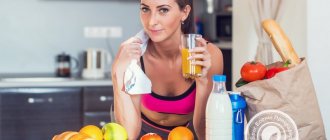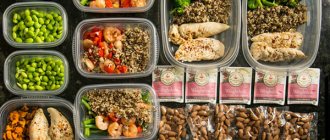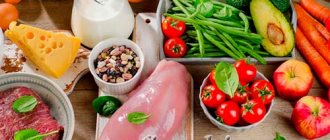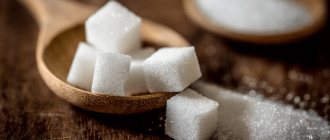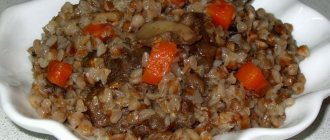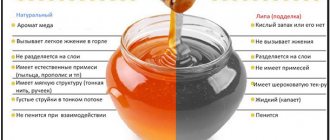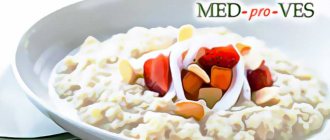Eating before training
As you already understand, pre-workout nutrition begins early in the morning after waking up. And it's a more important meal than the one before your workout. Ask why? Your body was fasting for 8-10 hours before breakfast, and eating after a workout is eating after a 2-3 hour fast.
After sleep, the body experiences a much greater deficit than after training. To awaken the body, drink water or liquid carbohydrates and after 15-30 minutes eat solid carbohydrates and proteins. It can be potatoes or porridge with meat, eggs - to your taste.
Now about eating immediately before the workout itself.
It is usually not recommended to eat food immediately before physical activity. Because during training, blood will flow from the muscles to the stomach. But is this really so? Yes and no. If you eat a solid meal consisting mostly of protein an hour before your workout, your body will have a hard time, in addition to lifting weights, it will need energy to digest the food.
But on the other hand, any meal leads to the release of insulin (a transport hormone) into the blood, which increases blood flow to the muscles, and with it an increased flow of oxygen, micro and macroelements, amino acids and other nutrients. In other words, eating before exercise increases protein synthesis in muscles.
In 2001, scientist Tipton and others conducted an experiment designed to determine how much protein synthesis improves during training after eating a liquid meal (a protein-carbohydrate cocktail).
It turned out that eating liquid food before training increases protein synthesis by at least two times. They also conducted an experiment of this kind after training and came to the conclusion that protein synthesis is less than if you take liquid food before training.
Conclusion: Immediately before training, it is not only possible, but necessary, to consume liquid, easily digestible food to improve protein synthesis.
This could be a gainer or a protein shake. You can use fast carbohydrates, such as chocolate.
And if you want to lose weight, on the contrary, check out the healthy diet menu for weight loss.
What time of day to eat cottage cheese
During the period of gaining muscle mass, it is better to eat cottage cheese several times a day. If strength training was in the evening, then you need to eat cottage cheese before bed. After training, you should have a hearty meal containing plenty of protein.
Cottage cheese at night for gaining muscle mass is very effective. During sleep, the body renews itself and it is during these hours that muscle mass grows. That’s why it’s so important to eat cottage cheese at night - muscles need building material for growth.
During the day, when gaining muscle mass, it is recommended to eat protein foods every three hours. At night, the body also needs to be provided with protein. How to do it? There are several options:
- wake up several times at night and eat protein foods;
- drink casein protein before bed
- Before going to bed, eat a portion of cottage cheese.
The cheapest and easiest option is the third one. Eating low-fat cottage cheese every day is not so pleasant - it is quite dry.
To make eating enjoyable, you can:
- add low-fat kefir to the cottage cheese;
- add banana, apples, pears and other fruits to the cottage cheese;
- add cinnamon or sugar substitute to the cottage cheese.
It is also useful to eat cottage cheese in the morning to gain muscle mass. You can add your favorite fruits to it or prepare simple dishes:
- cottage cheese casserole;
- syrniki;
- toast with cottage cheese.
How to eat cottage cheese after training
The decision to eat or not after a workout is made based on the purpose for which a person goes to the gym: to lose weight or grow muscles.
In the first case, a woman or girl is recommended to have a cottage cheese snack (100-150 g) after training (in the evening, including) after 30-40 minutes or even an hour or two, while internal fat reserves are used. If you do not wait at least a minimum period of time, the body, having received an alternative, easier way to get energy, will stop burning fat and switch to what it has just eaten.
Low-fat cottage cheese will not return the calories spent on the exercise machine (if you maintain half the proportion: for example, 600 kcal spent 300 kcal ate), but weight loss will also stop. You also can’t delay eating for too long, as it “burns”, releasing energy, not only fat, but also muscle tissue.
In the second case, when training is aimed at gaining weight (usually the male half of trainees is interested in this), it makes sense for a man to close the anabolic window (eat something protein-carbohydrate) if he went to the gym on an empty stomach, and not if he had eaten beforehand.
The anabolic window is the first 30 minutes after training, when muscles are most receptive to the proteins and carbohydrates consumed at this time, and are intensively restored and grown.
Homemade cottage cheese, fatty cottage cheese: what is the difference for sports.
Among the types of cottage cheese, the following are found on the shelves: fat and low-fat. Below Power-fit.ru looked at which is better to use cottage cheese for gaining muscle mass and drying the body.
The difference between them is not only in the percentage of fat content, but also in the amount of protein per 100 grams of substance. Low-fat cottage cheese has more protein, fatty cottage cheese has less.
This does not mean that low-fat cottage cheese is better, fatty cottage cheese is good for the initial stages of weight loss and fat burning. 9% cottage cheese is more filling, thanks to which you can calm your appetite for a long time. But you shouldn’t get too carried away with fatty cottage cheese, otherwise the body will use these fats as the main fuel, and then the diet or fat burning will come to naught. After all, 1 gram of fat contains 9 calories.
At the same time, dry cottage cheese, that is, low-fat cottage cheese, is better suited as a natural and healthy substitute for protein powder. “Adopt” after training to use low-fat cottage cheese as a dinner, and also immediately after training to close the protein-carbohydrate window.
And if you are training for weight, then any type of cottage cheese will do. The main thing is not to starve!
No. 3 Gainers and protein shakes
If you are unable to gain the required amount of calories, you should use special gainers and cocktails.
Gainer is a mixture of easily digestible carbohydrates and proteins. You should choose gainers that contain high quality protein (concentrate or isolate). The calorie content of a gainer should not be too high, otherwise the extra calories will turn into fatty tissue.
Gainer can be made at home by mixing cottage cheese, whey protein, oatmeal, as well as fruits and berries. All ingredients must be crushed and mixed using a blender. This cocktail can replace a full meal.
What to eat to lose weight?
If the goal of training is weight loss, then the list of foods allowed for consumption before training should be reduced. You especially need to remember the “golden rule” of losing weight: calorie consumption should exceed their intake into the body. The pre-workout diet of an athlete who wants to lose weight should not contain high-calorie foods: simple carbohydrates and excess fat. It is allowed to consume only small amounts of complex carbohydrates (no more than 15-20 grams per serving), as well as a sufficient amount of protein (about 20-30 grams per serving). At your own discretion, you can choose one of the proposed dish options:
- A small piece of chicken baked in the oven with buckwheat or wild rice;
- A small portion of white lean fish, steamed with brown rice;
- 2-3 poached eggs or omelet of 2 eggs with cottage cheese and herbs;
- Small veal steak with baked jacket potatoes.
Eating food before training should not interfere with full-fledged exercise, so it is advisable to eat at least 1.5-2 hours before physical activity. However, do not neglect eating before training, since without nutrition you will not be able to train intensely and effectively.
Forbidden food for runners
Pay attention to the list of foods that are extremely undesirable for runners:
- alcohol;
- deep-fried foods;
- fatty desserts;
- sauces and gravies;
- semi-finished products and fast food;
- soda;
- salty quick “snacks” like chips.
Be sure to remember that the distribution of nutrition during running training is not only the key to a successful workout, but also maximum benefit for the body. Remember that training with poor nutrition can harm your body.
Train correctly and go to the start line with the Almaty Marathon!
Express Your Reaction
Similar articles:
How to protect yourself abroad. Expert advice for vacationers
Any vacation begins with packing your suitcases and... a first aid kit! When traveling abroad, you should not...
I escaped from asthma!
We don't pay attention to many things in life. It seems that this is how it should be: we walk, we work with our hands...
Marathon runner etiquette. How to behave at a race to have a good time
The marathon is perhaps the largest running event in terms of the number of participants. To maintain order...
Top 10 habits that indicate the presence of an eating disorder
The occurrence of eating disorders (EDs) is based on a combination of a variety of factors...
Skyrunning: running in the mountains
Being healthy, strong and athletic is now fashionable. And it’s also common for people to strive for something...
Proper nutrition for cancer
Experts at the Vienna Cancer Research Institute have conducted extensive research on...
How to make homemade cottage cheese
If you are a gourmet or just like to experiment, you can make cottage cheese at home. You will need a liter of milk and a tablespoon of sour cream for souring. It is better to take full-fat milk; the ideal option is farm milk, but not everyone has this opportunity.
The sequence of actions will look like this. Pour slightly warmed milk into a glass jar, add sour cream, stir and leave at room temperature for at least a day and a half. The degree of readiness of curdled milk can be determined by the characteristic bubbles in the mass
It is important here not to overcook the intermediate product, as the cottage cheese may turn out sour.
Take a deep pan, put a napkin on the bottom, lower the jar to the bottom, fill it with water so that the level coincides with the upper limit of the mass. Fire is slow. After boiling, be careful to remove the jar immediately after the mixture has curdled. A guideline can be the sharp separation of whey
Please note that the curdled milk should all curdle. Now you can drain in a colander or cheesecloth.
There are recipes online that suggest turning off the heat immediately after the water boils, after which the jar should be left in the pan for another half hour. The situation is fraught with the fact that if the milk has not soured well, some of it will not curdle.
Please help make this article better. Answer just 3 questions.
Important. Do not buy pasteurized and super-pasteurized (“long-lasting”) milk, as it does not sour, but simply becomes bitter
Properly prepared cottage cheese is very tasty, soft and healthy. Preparation does not take much time, and the result will impress even the most picky athletes. The yield per liter of milk is about 300 grams.
We have all heard about the benefits of cottage cheese for athletes and people leading an active lifestyle. All these stories are not a joke or fiction, let's take a look at the composition of cottage cheese to understand why there is cottage cheese after a workout:
- cottage cheese consists of 50-60% casein - a slow milk protein that can provide energy for 5 hours;
- cottage cheese also contains healthy fats and slow carbohydrates, this only increases the duration of the feeling of fullness from cottage cheese;
- cottage cheese contains: calcium, phosphorus, vitamins A, C, PP, zinc, sodium, potassium, iron;
- Cottage cheese is an ideal source of methionine, an essential amino acid that protects against high cholesterol and fatty liver.
Now let’s determine whether you need to eat cottage cheese after a workout if you want to lose weight.
After training, your metabolic rate increases; your body has used up all readily available energy during exercise, and now it needs energy to restore muscles. Where will it get energy from - either from your fat reserves or from the food you eat immediately after training. Needless to say, the first option is preferable, which is why after training to lose weight you should not eat anything, not even cottage cheese.
In 1-2 hours
Your metabolism gradually slows down after successfully breaking down fats to meet energy needs. Now, 1-2 hours after training, you can safely eat cottage cheese with milk, for example. This will fill you with protein and help the growth of new muscle tissue.
Skim cheese
As for low-fat cottage cheese after a workout and generally consuming it at any other time, there are certain contradictions. The calcium contained in cottage cheese is needed for the synthesis of the hormone calcitriol - this hormone starts the fat burning process. But, alas, without fat, neither calcium nor vitamins are absorbed, so by eating low-fat cottage cheese, you are depriving yourself of its benefits.
How natural cottage cheese is made
The process of creating natural cottage cheese consists of several technological stages:
- Sourdough is added to milk, as a result of which the cottage cheese is fermented;
- the resulting mass is heated, resulting in a clot that contains whey and curd;
- the curd curd is filtered, dried and pressed.
This is how cottage cheese appears, which is included in the menu of all gym fans.
But, unfortunately, modern manufacturers make their own changes to this production process. As a result, the quality of the cottage cheese becomes worse.
Proper post-workout nutrition to gain muscle mass: a light snack, this is not a meal
It is worth knowing that the carbohydrate window is not all you need to know when organizing your own proper nutrition, which should definitely help build your own muscle mass. In fact, our body is a very smart machine and it is enough to stretch its convolutions to understand what you need to eat after training, for almost a day, when you need to give it special substances that will become the building materials of your new, healthy and beautiful body.
- Proteins, fats, as well as carbohydrates should be consumed abundantly, not forgetting about other substances.
- Microelements, as well as vitamins, do not directly participate in the construction of new muscles. However, it is undoubtedly necessary to eat them, because they can act as a kind of catalyst.
- Immediately after completing your workout, you should definitely drink water, but not from the tap, but preferably mineral water, to make up for their deficiency.
- After returning home, be sure to organize a fairly hearty lunch. You can eat carbohydrates - rice, potatoes, but also proteins are also necessary, for example, it is very good to consume eggs or meat.
- Fresh vegetables won’t hurt either, especially “watery” ones like cucumbers and tomatoes.
- To your great surprise, it is not recommended to drink a lot of food with food. You cannot drink juices, cocktails, much less tea or coffee. All the liquid that you consume while building muscles, and there really should be a lot of it, must be drunk exclusively in the intervals between meals, an hour after and at least half an hour before.
note
The second meal, which must follow after a light snack during the carbohydrate window, may not be the last of the day. The thing is that if there are still two hours or even more left before bed, you will have to eat again at night in order to achieve maximum results.
Thus, such a meal, an hour or two later, upon arrival from the gym, is only lunch; of course, a lot here depends on the time chosen for sports. It would be optimal to do this in the afternoon, but have lunch after having completed all your planned exercises, and only have a snack first, as experienced trainers recommend.
Useful properties of cottage cheese
Since childhood, we have known that cottage cheese is an excellent source of calcium. This product is vital for kids and adults. Adequate calcium intake helps strengthen hair, nails, teeth and bones.
Cottage cheese is indispensable for athletes who dream of building muscle mass. Just think that 100 grams of this product contains as much as 20 grams of protein (more than meat).
Cottage cheese will help build muscle without gaining fat mass.
Here are some more reasons to pay attention to cottage cheese as a source of protein:
- Cottage cheese is quickly digested, unlike meat and legumes.
- Cottage cheese does not cause fermentation or discomfort in the intestines. On the contrary, it normalizes the functioning of the digestive system.
- This dairy product perfectly satisfies and keeps you feeling full for a long time.
- Cottage cheese is rich in vitamins. It contains vitamins C, A and B vitamins.
- Cottage cheese consists of fast and slow proteins, the tandem of which promotes muscle gain.
What to eat to grow muscles?
Muscle growth is directly related to the processes of anabolism in the body, the creation of new high-molecular compounds, in our case, the synthesis of proteins (proteins). However, anabolism is always hampered by the processes of catabolism (destruction), which, under certain circumstances, which we will discuss below, can jeopardize the entire achieved result in bodybuilding, or even prevent beginners from progressing in the growth of strength and muscle mass.
As noted above, training is a strong stress, which, first of all, at the initial stage, triggers the active production of the hormone cortisol, which is responsible for catabolism, that is, for their destruction or the inability to increase muscles, however, in order to counteract it, there is one The most powerful anabolic factor is nutrition.
Adequate nutrition during strength training is the key to achieving powerful muscle mass. It consists of the following:
Of course, it is very problematic to count the constant amount of calories eaten and burned, so you need to follow simple rules that will easily provide you with the necessary conditions for muscle growth:
Nutrition and muscle growth
- Increase the number of meals to 5-6 (this could be a protein shake with a banana or cottage cheese with sour cream, not necessarily a full plate of food)
- Eliminate empty, harmful calories from your diet (fast food, chips, soda, foods stuffed with preservatives, fried pies), they will bring you nothing but a decrease in immunity and an increase in bad cholesterol
- Balance your diet (quality proteins, omega 3 fatty acids, complex carbohydrates, fruits, vegetables and greens should form the basis of the menu)
- If you find it difficult to gain weight, buy a gainer, and also protein and of course creatine will not hurt, as the most useful supplement in the kit of a novice bodybuilder or strength officer
- Do not try to increase the amount of protein per kg of weight, it is enough to consume 2-2.2 grams/kg of protein (seafood, tuna, chicken eggs and whey protein are some of the best quality protein products), this is quite enough to create a positive nitrogen balance, that is, the conditions under which muscle growth possible
- Gain your daily calorie intake mainly through the consumption of complex carbohydrates, which gradually saturate the body with energy, preventing excess from being stored as body fat
The most important tool of any “jock” is his sports bag, which always contains clean water, a protein shake, rice with chicken breast and eggs. Of course, it’s not much exaggerated, but you should get the point that the calorie content of foods, their usefulness, determine the processes of anabolism and muscle growth in the body.
There are no special foods for muscle growth, there are only general recommendations that were outlined above. Proteins play a special role in building new muscle structures, so it is advisable to choose protein products with high biological value, first of all:
- Seafood
- Whey Protein
- Chicken eggs
- Dairy products (cottage cheese, fermented baked milk, kefir, milk)
And of course, don’t forget to load up on carbohydrates, because they are consumed to a greater extent by anaerobic glycolysis. Sweets contain few beneficial substances for the body, and besides, they are absorbed very quickly into the blood, so we focused on the complex ones:
Complex carbohydrates in food
- Buckwheat
- Pasta
- Potato
- Porridge
- Rye bread
- Corn
- Beans
- Peas
- Brown rice
Omega 3 fatty acids keep blood vessels in a healthy state, especially important for those athletes who are on a steroid cycle, because the level of bad cholesterol increases significantly. Foods containing omega 3 fatty acids:
Foods containing omega 3 fatty acids:
- Tuna
- Salmon
- Olive oil
- Avocado
- Flax seeds
- Pumpkin seeds
- Walnuts
After successful strength training, muscle growth does not end there, or rather, it has not even begun yet. Only in the process of rest, recovery, and consumption of nutrients does a shift in the biochemical balance toward anabolism begin, and as a consequence, the synthesis of new muscle structures.
Tips from the book “Diet of Champions”
Milk Of particular importance to professional athletes, both important proteins found in milk - whey protein and casein - have been scientifically shown to protect muscles during intense physical activity and speed up muscle recovery after training.
Yogurt Try this: Eat yogurt with fruits and nuts after at least some workouts. This is a great recovery snack not only for its nutritional benefits, but also because it is easy to prepare and digestible, especially after a tough workout.
Beets are high in beta-alanines, a type of antioxidant that has unique anti-inflammatory properties. Therefore, beets are an excellent product to help restore after heavy exercise. Beetroot juice is very beneficial for athletes. It contains high levels of nitrates, which help blood vessels dilate during exercise, increasing blood and oxygen supply to the muscles. In addition, nitrates cause mitochondria in muscle cells to generate energy more efficiently.
Tea Despite the presence of caffeine, tea provides the human body with liquid in almost the same way as plain water. For Kenya's elite runners, tea is their main source of hydration and they prefer it with plenty of milk and sugar. In this form, it becomes especially beneficial after intense training, providing the body with fluid, the muscles with carbohydrates, the entire body with protein, as well as antioxidants to counteract oxidative stress.
Pre-workout nutrition
First of all, it is worth paying special attention to what you must eat before training! And this does not mean that you can stuff some bun into yourself right in the locker room - no. The meal should be balanced and take place 1-2 hours before visiting the fitness room.
The meal should be balanced and take place 1-2 hours before visiting the fitness room.
If the stomach is empty, then the whole exercise will be unsuccessful due to the lack of necessary resources in the body - at a minimum, there will be no desired effect and the usual load will not be carried out and, at maximum, there will be a fainting state.
If you eat a heavy meal immediately before training, then physical activity will interfere with the digestion process, blood from the organs will begin to flow into the muscles, which will not have the best effect on the process of playing sports, and in addition to this, lethargy and drowsiness will appear.
Before training, be sure to eat carbohydrates and proteins, and leave fats for meals after training.
Carbohydrates are required to fill glycogen stores, which are used by muscle tissue during training, so their amount must exceed the amount of protein. And some of the proteins, in turn, create an anabolic “prerequisite”, being a resource of amino acids for muscles. .
The serving size should be familiar - like a regular meal, there is no point in exceeding it, because this will only increase the overall calorie content of the diet and will not contribute anything directly to the training process (in a good way). The optimal calorie content here is 200 Kcal for women and 300 Kcal for men (this is enough without fat).
Carbohydrates. Of course, carbohydrates should be slow - brown rice, rolled oats, buckwheat, durum pasta, fresh vegetables.
Squirrels. As a protein component, it is recommended to choose chicken breast, lean beef and pork, turkey, trout, cottage cheese, low-fat cheese, and boiled eggs.
For dessert – apples, grapes, etc.
Pre-workout nutrition for muscle growth
Everyone involved in sports with the goal of gaining weight knows that this is impossible without special nutrition. It is necessary that the body receives not only a lot of protein, but also carbohydrates - they will affect the mass as such, and proteins will contribute to muscle synthesis. Therefore, in addition to the main meal 1.5-2 hours before class (meat with side dishes in all sorts of variations and additions), you need to make one snack half an hour before - a large piece of fruit, berries with a low glycemic index and a protein shake.
Pre-workout nutrition for weight loss
Weight loss occurs under the only condition - burning more calories than enters the body. But this still does not mean refusing to eat before training. You just need to reduce the number of carbohydrates, thereby reducing the calorie content of the serving. For example, you can eat a bowl of soup or a large portion of salad made from raw vegetables with the addition of boiled meat, and half an hour before training, have a snack with cottage cheese or drink strong green tea without sugar as an extra stimulant.
What can and cannot be eaten after running?
When a person decides to play sports, the main incentive will be daily observation of results. No matter what goal a runner pursues, in order to get benefits for the body, you need to follow the right lifestyle. You should forget about bad habits forever. There is a list of products that can saturate the human body with extremely useful microelements, and this especially applies to those who have adopted sports into their lives.
Recommended Products Table
| Can be used: | It is worth giving up: |
| a variety of porridges, such as buckwheat, oatmeal, rice, wheat; bananas; green tea; dried fruits, berries; whole grain bread only; veal; chicken breast; salmon; eggs; legume products. | any kind of fast food; bacon; energy and alcoholic drinks; fatty and too sweet treats; all fried foods without exception; melons; bell pepper; broccoli. |
After training, as well as during it, it is important not to drink carbonated mineral water. In addition, you should completely avoid drinking drinks containing caffeine and cola.
Alcohol after exercise
About alcohol from the book “Nutrition in Endurance Sports”:
Consuming large quantities of alcohol soon after training or competition can slow down the body's recovery. It is a diuretic that causes the body to excrete more fluid than it takes in, so losses need to be replaced even after moderate amounts of alcohol. It also disrupts the synthesis of glycogen - carbohydrate fuel - in the muscles and liver. Alcohol dilates blood vessels: this is worth thinking about with bruises and soft tissue damage. Swelling and bleeding worsen, interfering with healing.
Benefits of cottage cheese after training
Cottage cheese is a unique product of natural origin, containing a large amount of protein and microelements
Approximately 50-60% of the composition is accounted for by the slow protein casein, which is absorbed for quite a long time, which is so important when regularly performing strength exercises or when losing weight. Net protein content is 18 g per 100 g of product
Ideal as a snack or part of a diet, it satisfies hunger well and provides a feeling of fullness for a long time. Methionine (an amino acid) contained in cottage cheese reduces cholesterol levels in the blood and prevents fatty liver.
Cottage cheese contains calcium, necessary for the strength of bone tissue, phosphorus, zinc, potassium, sodium, iron, vitamins A, C, PP, B1, B2.
The calorie content of 9% fat cottage cheese is 236 kcal, medium fat content (3-5%) is 110 kcal. The slow carbohydrates it contains contribute to the gradual release of energy, maintaining body tone for a long time.
If we compare when it is better to eat cottage cheese - before or after a workout, then here we should focus on the carbohydrate content in it. They exist, but they are not enough to fully perform strength exercises. In this case, cottage cheese can be used as a snack, but add, for example, a banana, which contains a large amount of fiber.
Please help make this article better. Answer just 3 questions.
The best time to absorb cottage cheese is after a workout, when the supplied protein enters the muscles and does not go to meet energy needs.

